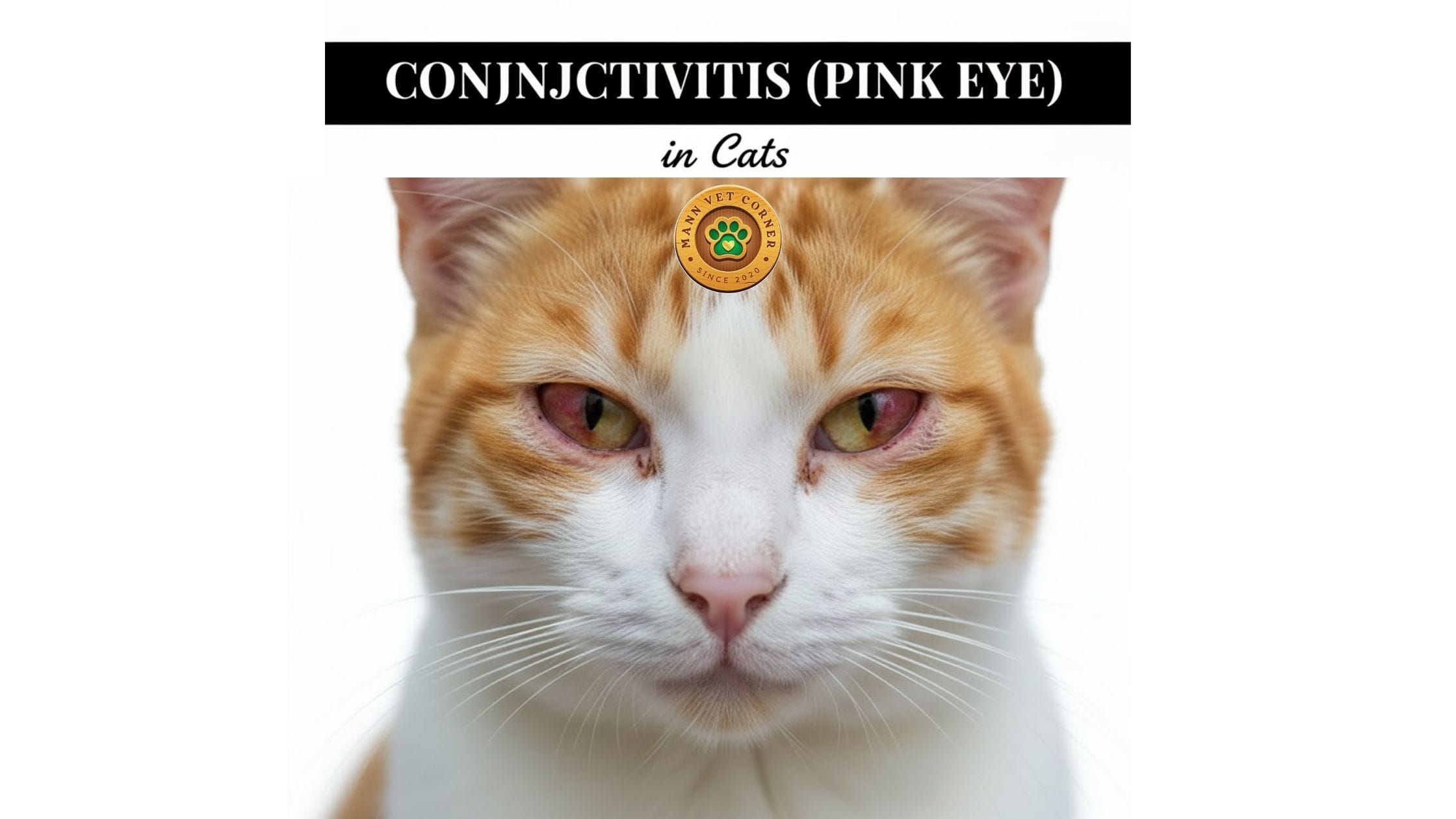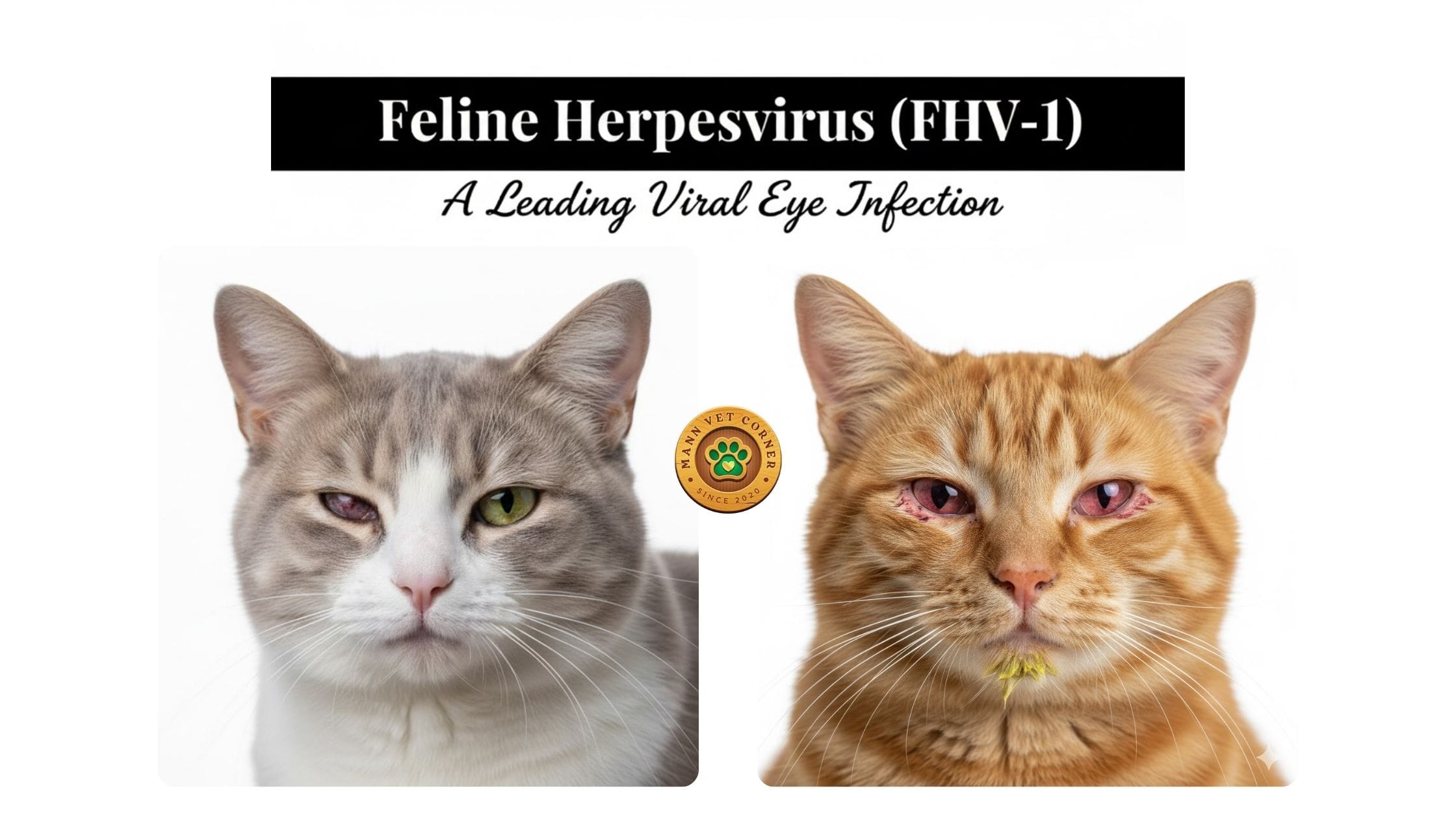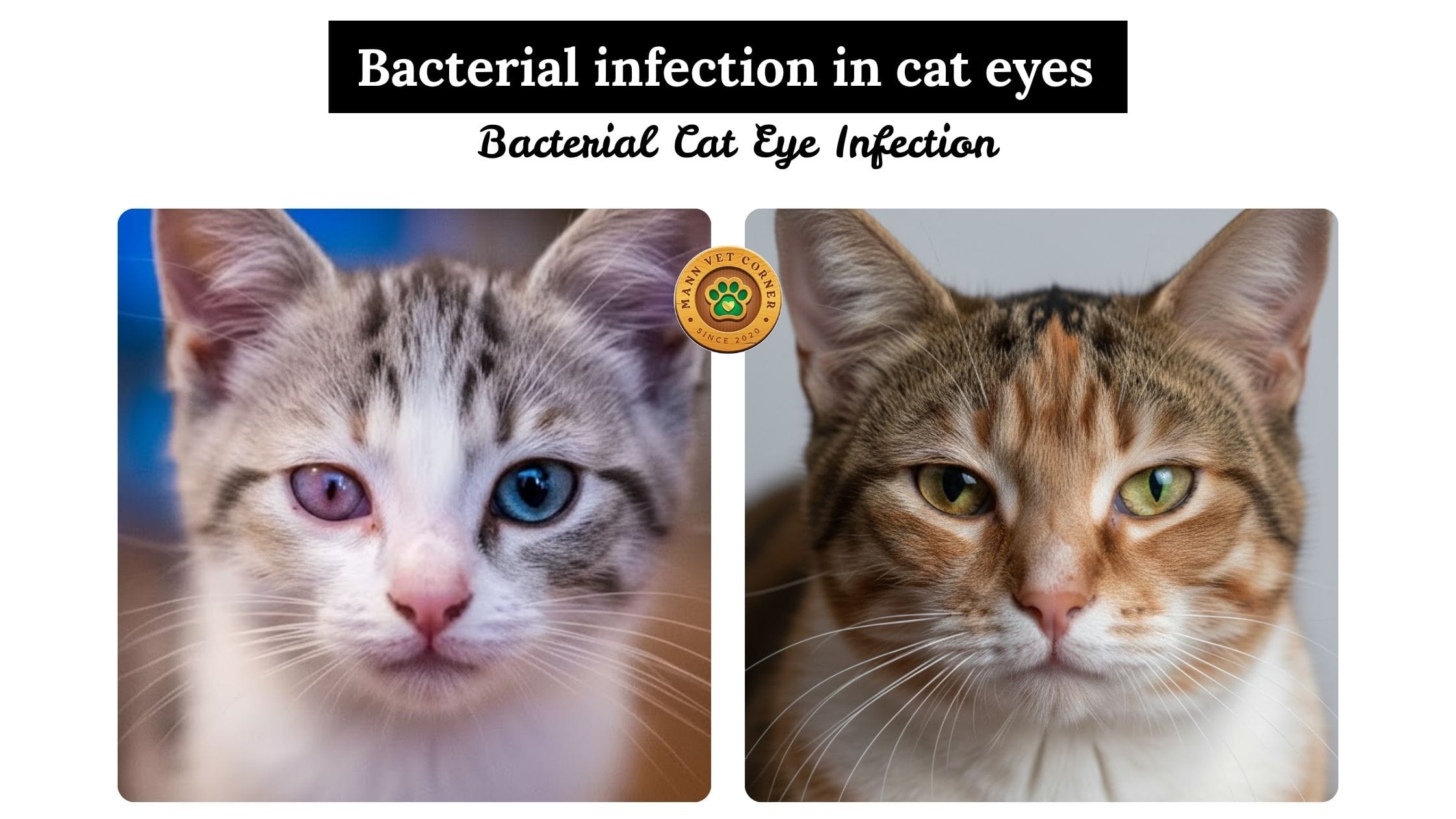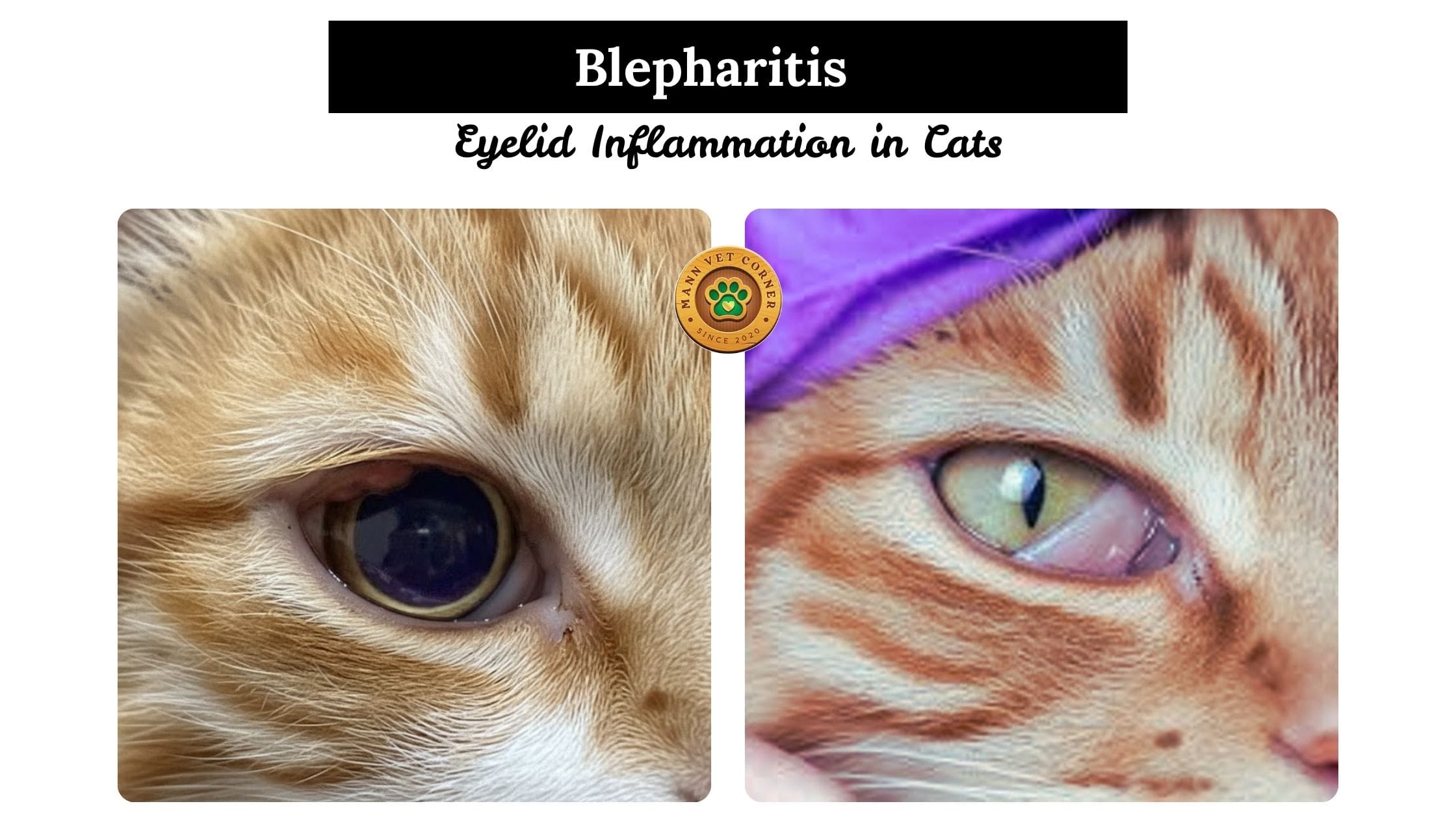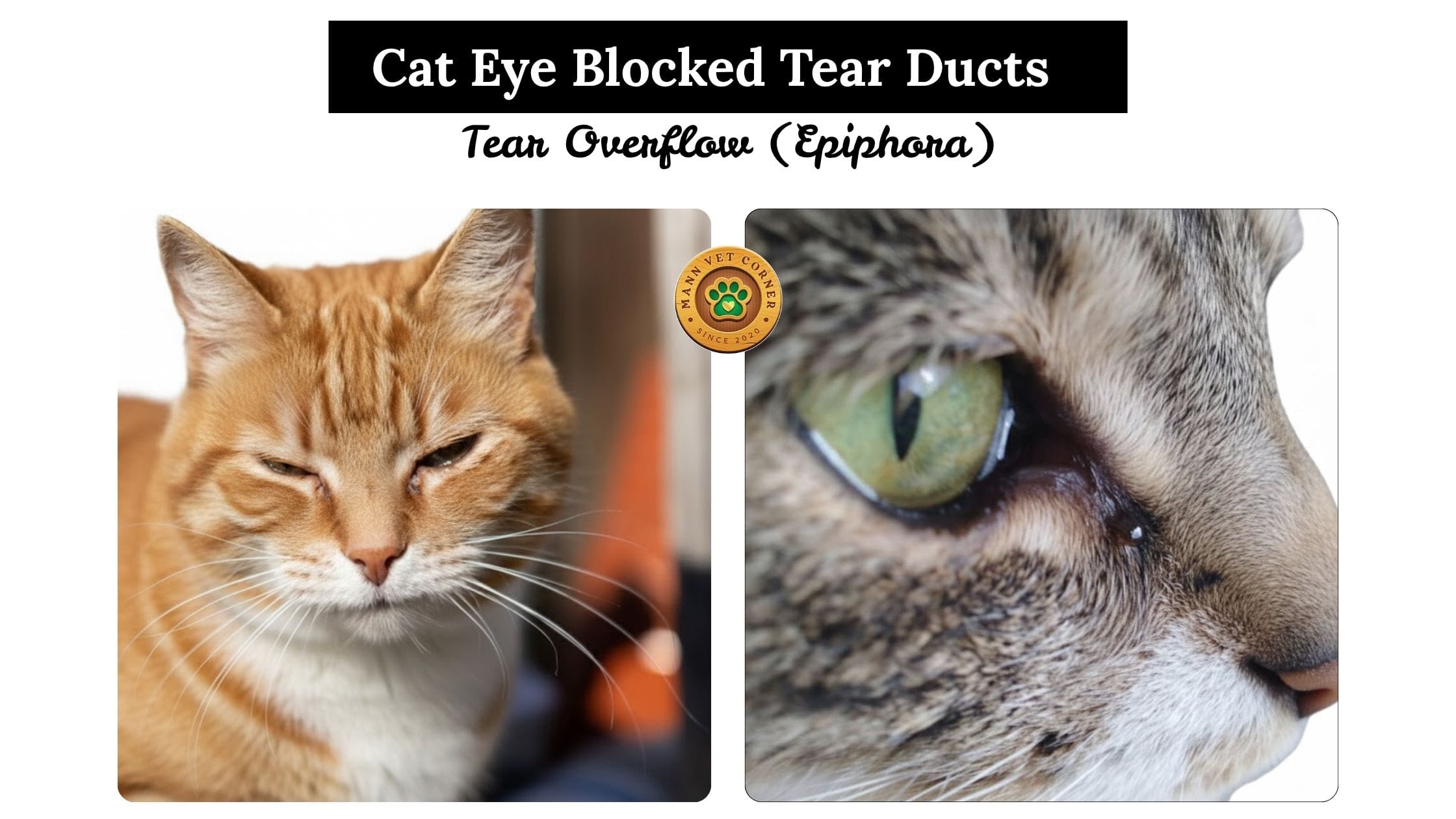Expert Vet Guide to Feline Eye Health
Cat eye infections are among the most common health issues affecting our feline companions. Whether you’re noticing discharge, redness, or squinting, understanding the causes and proper care methods can help protect your cat’s vision and overall wellbeing. This comprehensive guide covers the top 10 cat eye infections, their symptoms, and evidence-based treatment approaches to keep your cat’s eyes healthy and bright.
Understanding Cat Eye Infections: What Every Owner Should Know
Feline eye infections can range from mild irritations to serious conditions requiring immediate veterinary attention. The delicate structure of a cat’s eye makes it vulnerable to various pathogens, allergens, and injuries. Early detection and prompt treatment are crucial for preventing complications that could lead to permanent vision loss or chronic discomfort.
Cat eye care involves more than just treating active infections. It requires understanding the underlying causes, recognizing warning signs early, and implementing preventive measures. The most common infections include conjunctivitis, feline herpesvirus, and chlamydia, which respond well to veterinary-prescribed treatments when caught early.
Top 10 Cat Eye Infections: Symptoms, Causes & Treatment
1. Conjunctivitis (Pink Eye) in Cats
What is Feline Conjunctivitis?
Conjunctivitis, commonly known as pink eye, is the most prevalent eye infection in cats. This condition involves inflammation of the conjunctiva—the thin, pink membrane lining the inside of the eyelids and covering the white part of the eye. When inflamed, this tissue becomes red, swollen, and uncomfortable for your cat.
Causes of Cat Conjunctivitis
The causes of conjunctivitis in cats are diverse and can include:
- Viral infections, particularly feline herpesvirus (FHV-1)
- Bacterial pathogens like Chlamydia felis
- Fungal infections in rare cases
- Environmental allergens including pollen, dust, and smoke
- Chemical irritants or foreign objects in the eye
- Secondary complications from upper respiratory infections
Recognizing Conjunctivitis Symptoms
Watch for these telltale signs of conjunctivitis:
- Redness and swelling of the eye tissues
- Excessive squinting or keeping the eye partially closed
- Eye discharge ranging from clear and watery to thick, yellow, or green
- Pawing at the affected eye
- Sensitivity to light
- Crusty deposits around the eyelids, especially after sleeping
Treatment for Cat Pink Eye
Treatment depends on the underlying cause. Your veterinarian may prescribe antibiotic eye drops for bacterial infections, antiviral medications for viral causes, or antihistamines for allergic reactions. Gentle cleaning with a warm, damp cloth helps remove discharge and provides comfort. Never use human eye drops without veterinary approval, as many contain ingredients toxic to cats.
2. Feline Herpesvirus (FHV-1): A Leading Viral Eye Infection
Understanding Feline Herpesvirus Eye Disease
Feline herpesvirus type 1 (FHV-1) is one of the most common viral causes of conjunctivitis and upper respiratory infections in cats. This highly contagious virus affects up to 90% of cats at some point in their lives, often causing recurrent eye problems throughout their lifetime.
How Cats Contract FHV-1
The virus spreads through direct contact with infected cats, contaminated surfaces, or airborne droplets from sneezing. Kittens often contract it from their mothers, and stress can trigger flare-ups in previously infected cats. Once infected, cats typically carry the virus for life, with symptoms appearing during periods of stress or immune suppression.
FHV-1 Eye Infection Symptoms
Common signs include:
- Watery eye discharge that may become thick and colored
- Redness and inflammation of the conjunctiva
- Corneal ulcers or clouding
- Frequent squinting and eye discomfort
- Associated respiratory symptoms like sneezing and nasal discharge
- Decreased appetite and lethargy
Feline Herpesvirus Eye Treatment
While there’s no cure for FHV-1, symptoms can be managed effectively:
- Antiviral medications like famciclovir to reduce viral replication
- L-lysine supplements (250-500mg daily) to inhibit viral activity
- Supportive care including gentle eye cleaning with sterile saline
- Antibiotic eye drops to prevent secondary bacterial infections
- Immune support through proper nutrition and stress reduction
- Steam therapy to help clear nasal passages and reduce eye irritation
3. Chlamydia Felis: Bacterial Cat Eye Infection
What is Feline Chlamydia?
Chlamydia felis is a bacterial pathogen that commonly causes conjunctivitis in cats, particularly in multi-cat environments like shelters, catteries, and rescue facilities. This infection is highly contagious among cats but poses minimal risk to humans.
Transmission and Risk Factors
Chlamydia spreads through direct contact with infected cats or contaminated surfaces. Young cats between 5 weeks and 9 months are most susceptible. Risk factors include overcrowding, stress, poor ventilation, and concurrent infections that weaken the immune system.
Identifying Chlamydial Conjunctivitis
Symptoms typically begin in one eye and spread to both:
- Watery discharge that becomes thick and purulent
- Severe redness and swelling of the conjunctiva
- Chemosis (swelling of the conjunctival tissue)
- Mild respiratory symptoms in some cases
- Symptoms may persist for weeks without treatment
Treatment Protocol for Chlamydia Eye Infections
Effective treatment requires:
- Topical tetracycline eye ointment applied 2-4 times daily
- Oral antibiotics like doxycycline for 3-4 weeks for systemic treatment
- Treatment of all cats in the household, even if asymptomatic
- Environmental disinfection to prevent reinfection
- Isolation of infected cats until treatment is complete
4. Bacterial Eye Infections in Cats
Primary and Secondary Bacterial Infections
Bacterial eye infections can occur as primary infections or develop secondarily when viruses or injuries compromise the eye’s natural defenses. Common bacterial culprits include Staphylococcus, Streptococcus, and Pseudomonas species.
Symptoms of Bacterial Cat Eye Infections
Look for these indicators:
- Thick, yellow-green or gray eye discharge
- Matted fur around the eyes
- Eyelids stuck together, especially in the morning
- Swollen, red conjunctiva
- Cloudiness of the eye surface
- Pain and reluctance to open the eye
Antibiotic Treatment for Cat Eye Infections
Your veterinarian will prescribe:
- Topical antibiotic eye drops or ointments (such as neomycin, polymyxin B, or tobramycin)
- Oral antibiotics for severe or systemic infections
- Treatment duration typically ranges from 7-14 days
- Complete the full course even if symptoms improve to prevent antibiotic resistance
Home Care During Bacterial Infection Treatment
Support your cat’s recovery by cleaning discharge regularly with warm water, preventing scratching with an Elizabethan collar if necessary, and maintaining strict hand hygiene to prevent spreading infection to other pets.
5. Blepharitis: Eyelid Inflammation in Cats
What is Feline Blepharitis?
Blepharitis is inflammation of the eyelids that can affect one or both eyes. This condition causes the eyelids to appear swollen, red, and irritated, often making cats uncomfortable and affecting their appearance.
Causes of Cat Eyelid Inflammation
Blepharitis can result from:
- Secondary bacterial infections following viral illnesses
- Allergic reactions to environmental triggers or food
- Parasitic infections like Demodex mites
- Fungal infections in rare cases
- Immune-mediated conditions
- Trauma or foreign body irritation
Recognizing Blepharitis Symptoms
Watch for:
- Swollen, thickened eyelids
- Redness along the eyelid margins
- Crusting or scaling on the eyelid edges
- Loss of eyelashes
- Excessive tearing or discharge
- Rubbing or scratching at the eyes
- Visible discomfort when blinking
Treatment Approach for Blepharitis
A thorough veterinary examination is essential to identify the underlying cause. Treatment may include warm compresses to soften crusts, gentle cleaning with specialized eyelid scrubs, topical antibiotics for bacterial infections, anti-inflammatory medications, and treating any underlying conditions like allergies or parasites.
6. Blocked Tear Ducts and Tear Overflow (Epiphora)
Understanding Feline Tear Duct Problems
The tear ducts, or nasolacrimal ducts, drain tears from the eyes into the nasal cavity. When these ducts become blocked, tears overflow onto the face, causing constant dampness, staining, and potential skin irritation.
Causes of Blocked Tear Ducts in Cats
Common causes include:
- Congenital abnormalities, especially in flat-faced breeds
- Chronic eye infections causing inflammation and scarring
- Foreign material lodged in the duct
- Trauma or injury to the tear drainage system
- Tumors or polyps obstructing the duct
Signs Your Cat Has Blocked Tear Ducts
Typical symptoms are:
- Constant tear overflow creating wet fur below the eyes
- Brown or reddish staining on light-colored fur (tear staining)
- Skin irritation or dermatitis on the face
- Mild swelling near the inner corner of the eye
- Increased risk of secondary bacterial infections
Veterinary Treatment for Tear Duct Blockage
Your veterinarian may perform tear duct flushing under sedation or anesthesia to clear the obstruction. This involves inserting a small cannula into the duct and irrigating with sterile saline. Some cases require surgical intervention to create proper drainage. Ongoing management includes regular facial cleaning, treating underlying infections, and monitoring for recurrence.
7. Corneal Ulcers: Serious Eye Surface Injuries
What are Feline Corneal Ulcers?
A corneal ulcer is an open sore on the clear outer layer of the eye (cornea). These painful injuries can result from trauma, infections, or underlying diseases. Left untreated, corneal ulcers can lead to permanent scarring, perforation, or vision loss.
How Cats Develop Corneal Ulcers
Causes include:
- Scratches from fights, foreign objects, or self-trauma
- Chemical burns from irritating substances
- Untreated infections, especially feline herpesvirus
- Dry eye (keratoconjunctivitis sicca) lacking protective tear film
- Eyelid abnormalities causing chronic irritation
- Weakened immune system making healing difficult
Corneal Ulcer Warning Signs
Urgent symptoms requiring immediate veterinary care:
- Excessive squinting and eye pain
- Cloudiness or white spot on the eye surface
- Holding the eye shut
- Extreme sensitivity to light
- Watery or mucoid discharge
- Redness and inflammation
- Pawing at the eye
Emergency Treatment for Cat Corneal Ulcers
Corneal ulcers are veterinary emergencies. Treatment typically includes antibiotic eye drops or ointments to prevent infection, pain medication to relieve discomfort, Elizabethan collar to prevent self-trauma, and in severe cases, surgical options like conjunctival grafts. Your vet will use fluorescein stain to diagnose and monitor healing. Most simple ulcers heal within 7-10 days with proper treatment, but complicated cases may require weeks of care.
8. Uveitis: Internal Eye Inflammation
Understanding Feline Uveitis
Uveitis is inflammation of the uvea—the middle layer of the eye comprising the iris, ciliary body, and choroid. This serious condition can affect one or both eyes and often indicates underlying systemic disease.
Causes of Uveitis in Cats
Common triggers include:
- Infectious diseases like feline leukemia virus (FeLV), feline immunodeficiency virus (FIV), or toxoplasmosis
- Fungal infections such as cryptococcosis or histoplasmosis
- Immune-mediated conditions
- Trauma to the eye
- Cancer, including lymphoma
- High blood pressure (hypertension)
Symptoms of Cat Eye Uveitis
Watch for these serious signs:
- Redness of the eye
- Cloudiness or haziness in the eye
- Changes in eye color
- Small, constricted pupil (miosis)
- Squinting and light sensitivity
- Eye pain and reluctance to open the eye
- Vision changes or blindness
- Blood in the anterior chamber (hyphema)
Treatment Strategy for Uveitis
Treatment focuses on both the inflammation and underlying cause. Anti-inflammatory eye drops containing corticosteroids or NSAIDs reduce inflammation. Pupil-dilating medications (atropine) relieve pain and prevent complications. Systemic medications treat the underlying disease. Frequent veterinary monitoring is essential as uveitis can lead to glaucoma, cataracts, or retinal detachment if not properly managed.
9. Glaucoma: Dangerous Eye Pressure Increase
What is Feline Glaucoma?
Glaucoma is a serious condition characterized by increased intraocular pressure (IOP) within the eye. This elevated pressure damages the optic nerve and retina, causing pain and progressive vision loss. Glaucoma can be primary (inherited) or secondary to other eye diseases.
Primary vs. Secondary Glaucoma
Primary glaucoma is rare in cats and usually affects Siamese and Burmese breeds due to genetic factors. Secondary glaucoma is more common and develops as a complication of uveitis, lens luxation, tumors, or chronic eye infections.
Critical Glaucoma Symptoms
Emergency signs requiring immediate veterinary care:
- Enlarged, bulging eye (buphthalmos)
- Cloudy or hazy cornea
- Dilated pupil that doesn’t respond to light
- Redness and visible blood vessels
- Obvious eye pain and squinting
- Tearing and discharge
- Behavioral changes due to pain
- Vision loss or blindness
Aggressive Treatment for Cat Glaucoma
Glaucoma is an ophthalmic emergency. Treatment aims to lower eye pressure quickly using prescription eye drops that either decrease fluid production (beta-blockers, carbonic anhydrase inhibitors) or increase drainage (prostaglandin analogs). Oral medications like carbonic anhydrase inhibitors provide additional pressure reduction. Pain management is crucial. In advanced cases where vision is lost, surgical options include laser therapy or eye removal (enucleation) to eliminate pain.
10. Toxoplasmosis: Parasitic Eye Infection
Feline Toxoplasmosis and Eye Disease
Toxoplasmosis is caused by the parasite Toxoplasma gondii. While cats are the definitive host for this parasite, eye involvement is uncommon. When it does affect the eyes, toxoplasmosis typically causes uveitis and chorioretinitis (inflammation of the choroid and retina).
How Cats Contract Toxoplasmosis
Cats become infected by:
- Consuming infected prey animals like rodents and birds
- Eating undercooked meat
- Contact with contaminated soil or cat feces
- Congenital transmission from mother to kittens
Toxoplasmosis Eye Symptoms
Affected cats may show:
- Uveitis symptoms including redness and cloudiness
- Retinal inflammation visible during eye examination
- Vision problems or blindness
- Associated systemic symptoms like fever, lethargy, loss of appetite, neurological signs, or respiratory difficulty
Antibiotic Treatment Protocol
Diagnosis requires blood tests to detect antibodies and sometimes ocular fluid analysis. Treatment involves clindamycin antibiotic for 3-4 weeks, sometimes combined with other antibiotics like azithromycin. Anti-inflammatory medications manage eye inflammation. The prognosis varies depending on severity; many cats recover fully with prompt treatment, but some may experience permanent vision damage.
Comprehensive Cat Eye Care and Prevention Strategies
Daily Eye Care Routine for Cats
Gentle Cleaning Techniques
Proper eye cleaning prevents infection and keeps your cat comfortable. Use a warm, damp, clean cloth or cotton ball to gently wipe away any discharge or crusty material. Always wipe from the inner corner outward, using a separate cloth for each eye to prevent cross-contamination. Never use tissues or rough materials that could scratch the delicate eye area.
When to Clean Your Cat’s Eyes
Daily observation helps you catch problems early. Clean your cat’s eyes whenever you notice discharge, after they wake up if there’s crust buildup, or as directed by your veterinarian during treatment. Cats with flat faces like Persians may need daily cleaning due to their facial structure.
Administering Cat Eye Medications Correctly
How to Apply Eye Drops
Proper medication administration is crucial for treatment success:
- Wash your hands thoroughly before handling medications
- Gently clean away any discharge before applying medication
- Hold your cat securely, perhaps wrapped in a towel if needed
- Tilt the head slightly upward
- Pull down the lower eyelid to create a small pocket
- Hold the dropper above (not touching) the eye and release the prescribed number of drops
- Allow your cat to blink to distribute the medication
- Reward your cat with treats and praise
Applying Eye Ointments
For ointments, pull down the lower eyelid and apply a thin ribbon of medication along the inside of the lid. Gently close the eye and massage the eyelid to distribute. Ointments typically last longer than drops and may be prescribed for nighttime use.
Completing the Full Treatment Course
Never stop medication early, even if symptoms improve. Incomplete antibiotic courses can lead to resistant infections. If you’re having difficulty administering medication, contact your veterinarian for guidance or alternative formulations.
Nutritional Support for Eye Health
Hydration and Eye Health
Adequate hydration maintains tear production and overall eye health. Ensure fresh water is always available. Consider a cat water fountain to encourage drinking, as many cats prefer running water. Wet food provides additional moisture and may benefit cats with chronic eye issues.
Essential Nutrients for Feline Vision
A high-quality diet supporting eye health should include:
- Taurine: This essential amino acid prevents retinal degeneration
- Omega-3 fatty acids: Support eye structure and reduce inflammation
- Vitamin A: Crucial for vision and corneal health
- Antioxidants (vitamins C and E): Protect eye tissues from oxidative damage
- Lutein and zeaxanthin: Support retinal health
Commercial cat foods are formulated with these nutrients, but cats with chronic eye issues may benefit from veterinary therapeutic diets.
Regular Professional Eye Examinations
Annual Veterinary Check-ups
Routine wellness exams should include thorough eye examination. Your veterinarian will check for:
- Clear, bright eyes without discharge
- Normal pupil size and response to light
- Healthy conjunctiva without redness or swelling
- Clear cornea without cloudiness or scratches
- Normal intraocular pressure
- Age-appropriate lens clarity
When to Schedule Emergency Eye Exams
Seek immediate veterinary care if you notice:
- Sudden vision loss or blindness
- Obvious pain or keeping the eye shut
- Trauma to the eye
- Rapid swelling or bulging of the eye
- Blood in or around the eye
- Sudden cloudiness or color change
- Persistent squinting and discharge despite home care
Early intervention prevents complications and preserves vision.
Hygiene Practices for Multi-Cat Households
Preventing Cross-Infection
In homes with multiple cats, preventing the spread of eye infections requires vigilance:
- Wash hands thoroughly before and after handling each cat’s eyes
- Use separate cleaning materials for each cat
- Isolate cats with contagious infections like conjunctivitis or herpesvirus
- Clean and disinfect shared items like food bowls and litter boxes
- Monitor all cats for signs of infection even if only one is affected
Environmental Sanitation
Maintain a clean environment by regularly disinfecting surfaces with pet-safe cleaners, washing bedding in hot water, ensuring good ventilation to reduce airborne pathogens, and minimizing stress which can trigger viral flare-ups.
Stress Reduction and Immune Support
How Stress Affects Cat Eye Health
Stress weakens the immune system and can trigger recurrent infections, particularly herpesvirus flare-ups. Common stressors include changes in routine, new pets or people in the home, moving to a new location, and loud noises or disruptions.
Creating a Calm Environment
Support your cat’s immune health by providing safe spaces where they can retreat, maintaining consistent routines, using calming pheromone diffusers, offering environmental enrichment through play and puzzle toys, and ensuring adequate rest periods.
Breed-Specific Eye Health Considerations
Flat-Faced (Brachycephalic) Breeds
Persian, Himalayan, and Exotic Shorthair cats have shortened facial structures making them prone to chronic tearing, corneal exposure issues, and increased infection risk. These breeds require daily eye cleaning and may benefit from artificial tears to keep eyes moist.
Siamese and Asian Breeds
These breeds have genetic predisposition to glaucoma and progressive retinal atrophy. Regular eye pressure monitoring and genetic screening for breeding cats help prevent these conditions.
Mixed Breed and Rescue Cats
Cats from shelters or rescue situations may have had limited healthcare and could carry chronic infections like herpesvirus or chlamydia. New adoptions should include thorough eye examinations and may require preventive treatment protocols.
Understanding the Cost of Cat Eye Care
Routine Care Expenses
Regular eye care includes the cost of quality commercial cat food ($20-60 monthly), annual wellness exams including eye checks ($50-150), and cleaning supplies and preventive supplements ($10-30 monthly).
Treatment Costs for Eye Infections
When eye problems arise, expect costs for diagnostic examination and testing ($75-200), prescription eye medications ($20-100), follow-up examinations ($50-100), and treatment duration typically 1-4 weeks.
Specialized Eye Care
Complex conditions require specialist referral to veterinary ophthalmologists ($150-300 for consultation), advanced diagnostics like ultrasound or pressure testing ($100-300), surgical procedures for severe cases ($500-3,000+), and long-term management of chronic conditions.
Pet insurance can help manage these costs, with many policies covering eye conditions. Consider insurance early in your cat’s life before pre-existing conditions develop.
The Importance of Early Detection
Recognizing Subtle Changes
Cats instinctively hide illness, making early detection challenging. Learn your cat’s normal appearance and behavior so you notice subtle changes like slight redness, minor discharge, increased blinking, changes in eye shine or color, or altered activity levels.
Documenting Symptoms
When you notice eye changes, take clear photos in good lighting to show your veterinarian, note when symptoms started and any progression, record any associated symptoms like sneezing or appetite changes, and document your cat’s exposure to other animals or potential irritants.
The Vision-Saving Power of Prompt Care
Many serious eye conditions respond well to treatment when caught early but can lead to permanent damage if delayed. Corneal ulcers can perforate if untreated, glaucoma causes irreversible vision loss within hours to days, and chronic infections may lead to scarring affecting long-term eye health.
Home Remedies: What’s Safe and What’s Not
Safe Supportive Care at Home
You can safely provide warm compresses for comfort using clean, damp cloths, plain saline solution for gentle flushing (never medicated), L-lysine supplements for herpesvirus-positive cats under veterinary guidance, and increased humidity using humidifiers for respiratory-related eye issues.
Dangerous Home Treatments to Avoid
Never use these without veterinary approval:
- Human eye drops or contact lens solution
- Tea bags or herbal remedies
- Breast milk or colloidal silver
- Over-the-counter antibiotic creams
- Apple cider vinegar or other acidic substances
These can cause serious damage, interfere with proper diagnosis, or delay necessary treatment. Always consult your veterinarian before trying any home remedy.
Living with a Cat with Chronic Eye Conditions
Managing Herpesvirus Carriers
Cats with feline herpesvirus require lifelong management including daily L-lysine supplementation, stress reduction strategies, prompt treatment of flare-ups, regular veterinary monitoring, and consideration of antiviral therapy during outbreaks.
Supporting Blind or Vision-Impaired Cats
Cats with vision loss can live happy lives with environmental modifications such as keeping furniture in consistent locations, using texture cues like rugs to mark areas, providing safe vertical spaces with barriers, using sound cues like talking to your cat as you approach, and maintaining a predictable routine.
Conclusion: Protecting Your Cat’s Vision for Life
Cat eye infections and diseases range from minor irritations to serious, vision-threatening conditions. Understanding the top 10 cat eye problems—from common conjunctivitis to serious conditions like glaucoma—empowers you to recognize symptoms early and seek appropriate care. Remember that gentle cleaning with warm water, completing prescribed medications exactly as directed, ensuring proper hydration and nutrition, scheduling regular veterinary check-ups, and maintaining strict hygiene practices form the foundation of excellent eye care.
Your cat’s eyes are windows to their health. Any persistent redness, discharge, squinting, cloudiness, or behavioral changes warrant veterinary evaluation. With prompt professional care, most eye infections resolve completely, allowing your feline friend to see clearly and comfortably throughout their life. Never hesitate to contact your veterinarian with eye concerns—when it comes to vision, early intervention makes all the difference.

